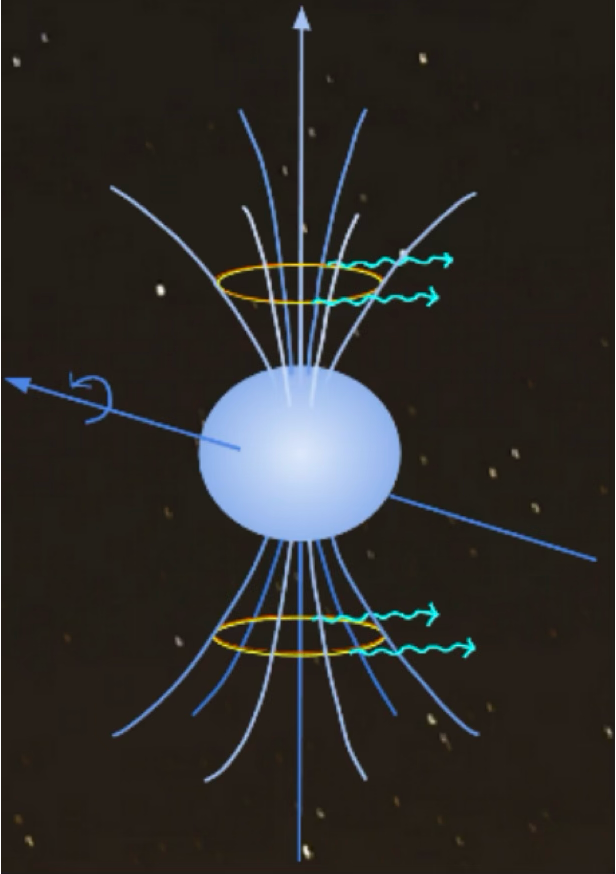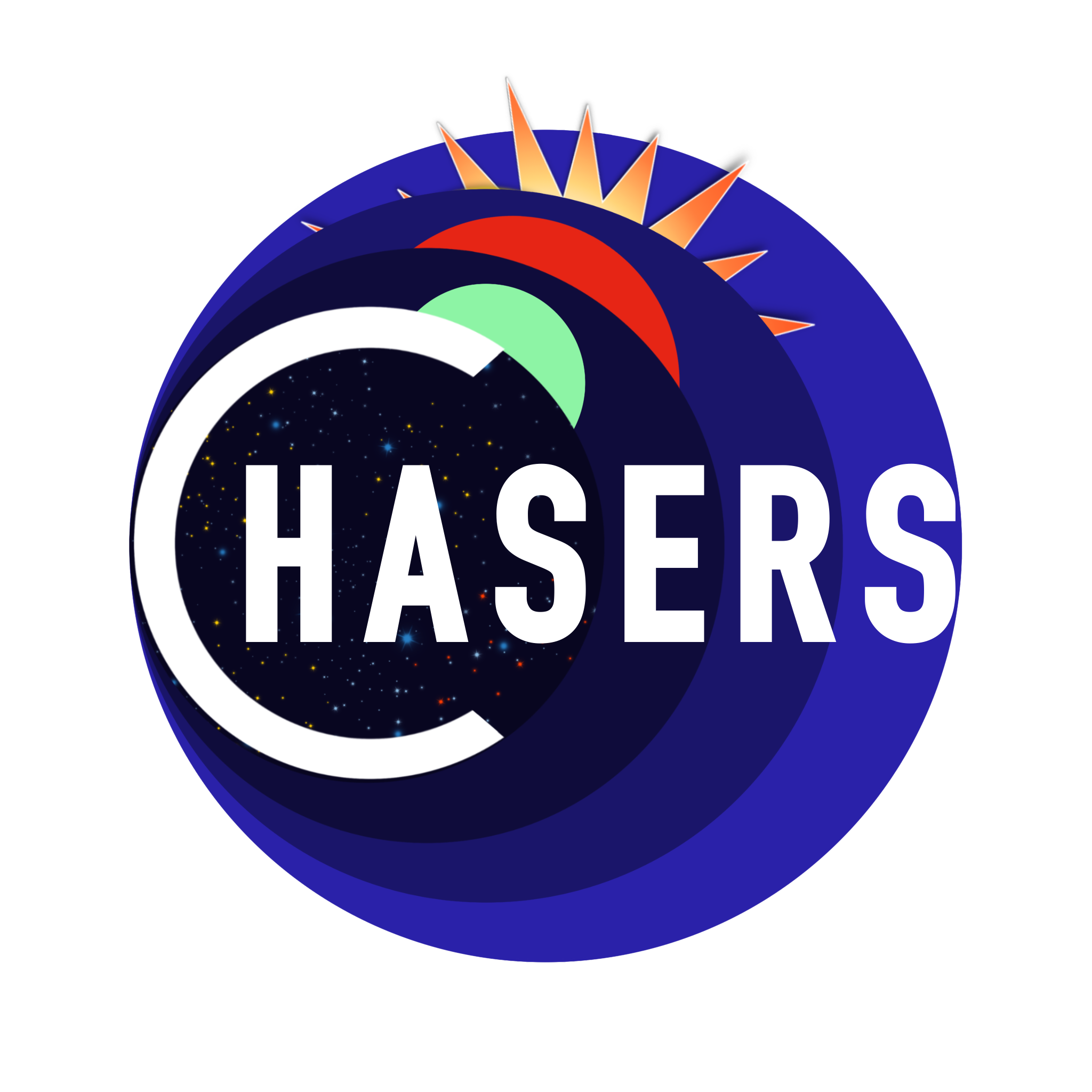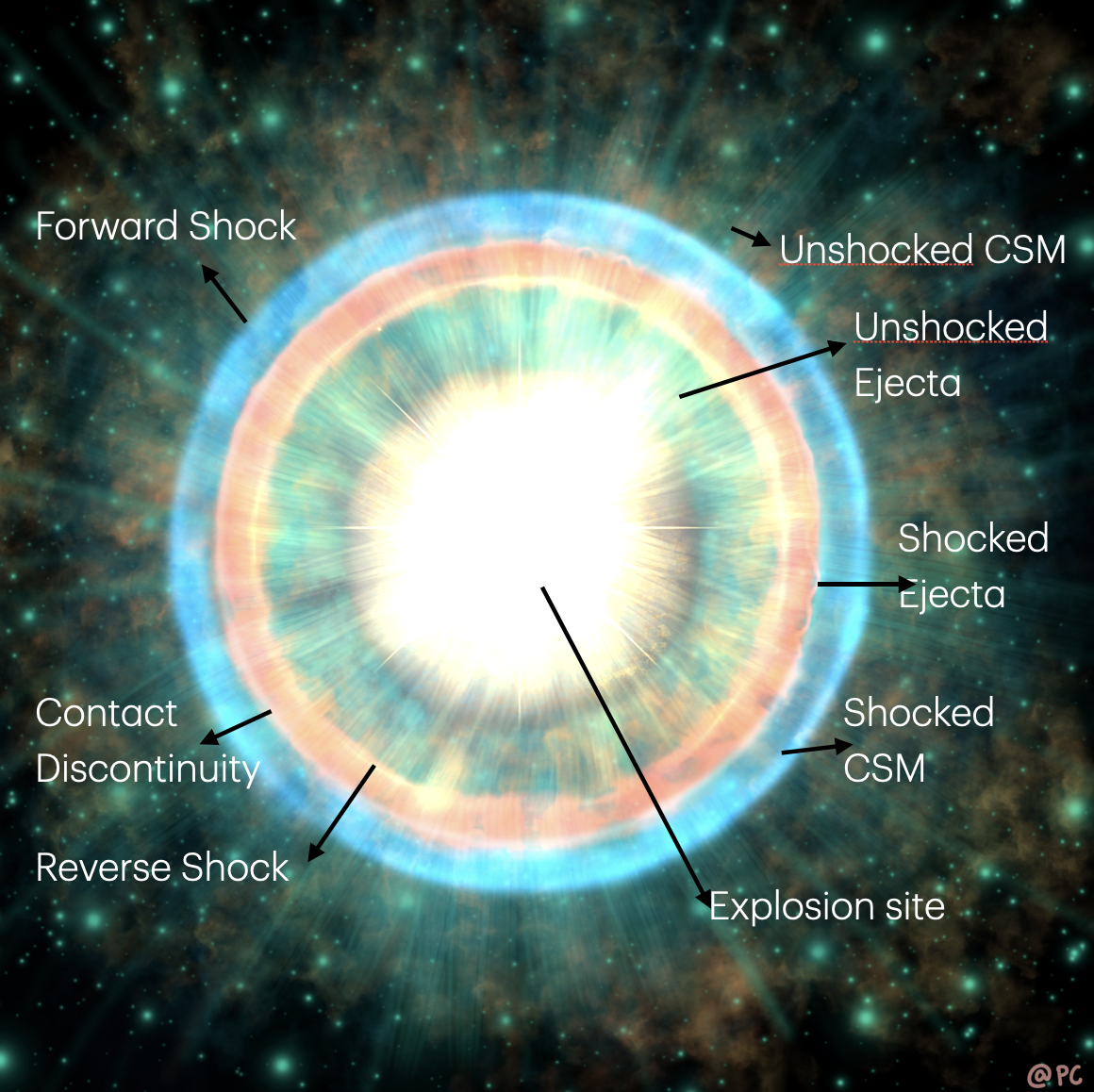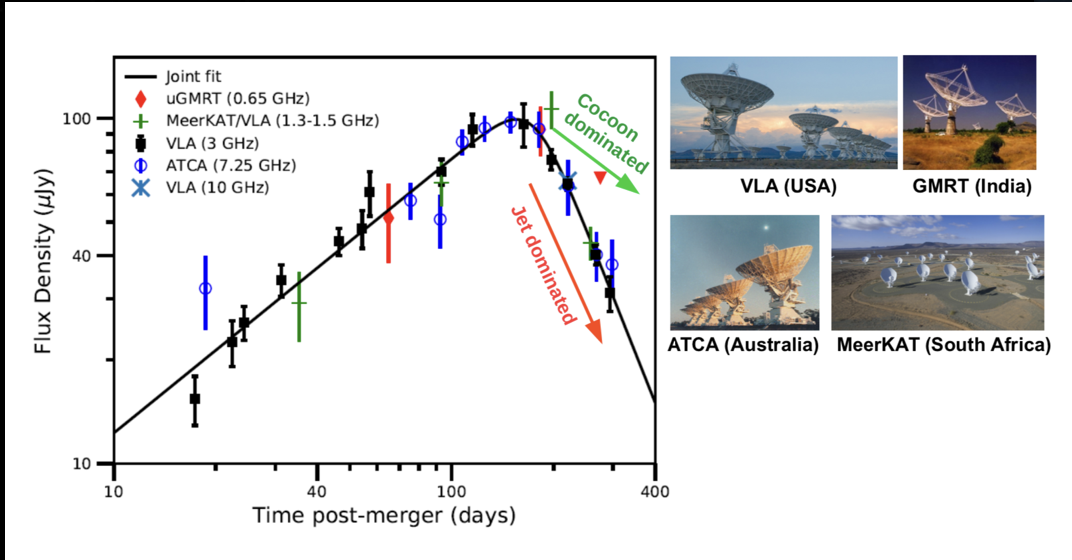My research interests are in the field of evolution of massive stars and explosive transients. I am part of UVA's Exploding Stars and Time Domain Astronomy research group. My research logo CHASERS stands for Chandra's Hub for Astrophysical Studies of Transients and Related Science . This encompasses most of my research interests.
Spectropolarimetric surveys show that around 10 percent of all massive stars are magnetic with kG dipolar
magnetic fields.
 Our group aims to understand the evolution of such stars and various ways in which magnetic fields manifest
themselves. Towards this goal our group carried out a systematic study of magnetic massive stars in radio
bands and discovered a rare Cyclotron Maser Emission (ECME) in a fraction of magnetic stars. Currently more
than 2/3rd of all known magnetic stars exhibiting ECME have been discovered by our group with the Indian
upgraded Giant Metrewave Radio Telescope (GMRT) and this has put the GMRT on the world map. The discovery
of ECME has allowed us to unravel the 3D magnetic topology of the stars and plasma very close to stars,
inaccessible by any other means. This has important implications for stellar demise and end products,
which we aim to unravel.
Our group aims to understand the evolution of such stars and various ways in which magnetic fields manifest
themselves. Towards this goal our group carried out a systematic study of magnetic massive stars in radio
bands and discovered a rare Cyclotron Maser Emission (ECME) in a fraction of magnetic stars. Currently more
than 2/3rd of all known magnetic stars exhibiting ECME have been discovered by our group with the Indian
upgraded Giant Metrewave Radio Telescope (GMRT) and this has put the GMRT on the world map. The discovery
of ECME has allowed us to unravel the 3D magnetic topology of the stars and plasma very close to stars,
inaccessible by any other means. This has important implications for stellar demise and end products,
which we aim to unravel.


 Hence they hold the key to the Universe, yet remain poorly understood and the very last moments of stellar
deaths leading to supernovae are not well understood. Studying the supersonically moving supernova ejecta’s
interaction with the surrounding slow winds, which reveals itself in radio and X-ray emission, enables one to
study the stellar evolution just before the explosion. This is because the winds are formed by the mass lost
from the star and their evolution carries the unique footprints of the progenitor star’s history, hence work
as a “Time Machine”.
We are using this novel technique and have several highly significant findings in this field. Our most notable
contributions came in supernovae exploding in dense environments, where we unravelled the presence of rare
internal absorption, previously only speculative in one case, confirming the asymmetry in the explosion, and
non-smooth mass-loss history. We also found the mass-loss rates in these stars to be 3–4 orders of magnitude
higher than the ones predicted from stellar evolution models, an open problem in the field. Our X-ray
observations of SN 2010jl have revealed the direct presence of the circumstellar medium due to mass loss by
measuring 1000 times higher column density in the SN medium than the Galactic one.
Recently we have proposed a realistic inhomogeneous radio emission caused by varying magnetic fields in stripped
supernovae. We also collected 15 years of data on a special stripped envelope supernova in radio, optical and
X-ray bands and have shown that such explosions occur via a common envelope scenario in a binary system. The
focus of our group is to explore the landscape of interactions in core-collapse supernovae.
Hence they hold the key to the Universe, yet remain poorly understood and the very last moments of stellar
deaths leading to supernovae are not well understood. Studying the supersonically moving supernova ejecta’s
interaction with the surrounding slow winds, which reveals itself in radio and X-ray emission, enables one to
study the stellar evolution just before the explosion. This is because the winds are formed by the mass lost
from the star and their evolution carries the unique footprints of the progenitor star’s history, hence work
as a “Time Machine”.
We are using this novel technique and have several highly significant findings in this field. Our most notable
contributions came in supernovae exploding in dense environments, where we unravelled the presence of rare
internal absorption, previously only speculative in one case, confirming the asymmetry in the explosion, and
non-smooth mass-loss history. We also found the mass-loss rates in these stars to be 3–4 orders of magnitude
higher than the ones predicted from stellar evolution models, an open problem in the field. Our X-ray
observations of SN 2010jl have revealed the direct presence of the circumstellar medium due to mass loss by
measuring 1000 times higher column density in the SN medium than the Galactic one.
Recently we have proposed a realistic inhomogeneous radio emission caused by varying magnetic fields in stripped
supernovae. We also collected 15 years of data on a special stripped envelope supernova in radio, optical and
X-ray bands and have shown that such explosions occur via a common envelope scenario in a binary system. The
focus of our group is to explore the landscape of interactions in core-collapse supernovae.
 Another important finding by us is in the field of electromagnetic (EM) counterparts of gravitational waves
(GWs), discovered first in Sep 2015, nearly 100 years after the prediction of their existence by Einstein. We
studied the GW event of 2017 Aug 17 (GW170817; the only GW event from neutron stars’ merger) with the upgraded
GMRT and several other radio telescopes across the world. This research has made fundamental contributions to
our understanding of merger environments producing GWs, implications for short GRBs, and the evolution of the
jet. Our work has favoured a wide cocoon breaking out of the polar region and emitting across the EM bands.
The upgraded GMRT observations provided the lowest frequency observations till date, putting the best
constraints on the density.
Another important finding by us is in the field of electromagnetic (EM) counterparts of gravitational waves
(GWs), discovered first in Sep 2015, nearly 100 years after the prediction of their existence by Einstein. We
studied the GW event of 2017 Aug 17 (GW170817; the only GW event from neutron stars’ merger) with the upgraded
GMRT and several other radio telescopes across the world. This research has made fundamental contributions to
our understanding of merger environments producing GWs, implications for short GRBs, and the evolution of the
jet. Our work has favoured a wide cocoon breaking out of the polar region and emitting across the EM bands.
The upgraded GMRT observations provided the lowest frequency observations till date, putting the best
constraints on the density.